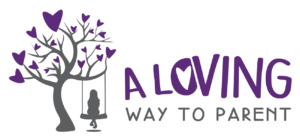According to the Center for Disease Control, 4.4 million children in the United States have been diagnosed with Anxiety Disorder. The most shocking part is it starts at age 3! What is wrong with this picture, and what can parents do? Let’s explore that.
What is Anxiety?
The Merriam Webster Dictionary says anxiety is “apprehensive uneasiness or nervousness usually over an impending or anticipated ill.” Translation: worrying about something that is coming up.
Let’s take a look at what it’s like growing up today, compared to years ago:
| In the Past | Today |
| Parents walked their kids to class | Drive-thru drop-off and pick-up (rushed) |
| Parents helped with homework | Tutors are needed (extra cost can be stressful, if a family can even afford it) |
| Hands on learning (books, paper, variety of environments, tools, styles) | Computer learning (hard on the body and the mind) |
| Spend a few days on a subject in class | Every day is a new concept in most classes |
| Fire and earthquake drills | Active shooter drills |
| Easy to catch up on sick days (slower pace; you didn’t miss as much) | Sick days get you behind fast (new content daily) |
| Self-care was built in with weekends off, family time and sports for enjoyment | Self-care/sleep is pushed aside by homework, sports schedules and children living between two homes |
| School campuses were open during the day | Schools are fenced and locked (kids say it feels like prison) |
| Missing assignments were in the teacher’s gradebook only (until report cards) | Missing assignments create DAILY fights at home |
| 4.0 GPA (there was a cap) | 5.3+ GPA (no current cap) |
After looking at this list, it’s no wonder kids are stressed. In truth, everyone gets anxious at times, but chronic stress/anxiety is extremely unhealthy. We need to see anxiety as a message and be grateful for it, instead of trying to quiet that voice with medication. When a person is dealing with too much, or things are moving too fast, they get overwhelmed/anxious. The body is saying “stop”. However, when kids have no way of changing the pace and/or nowhere to turn for support/relief, it often feels like being buried under an avalanche. When teachers and parents both say “get it done” instead of having compassion and evaluating whether the demands are even reasonable, kids feel alone; no advocate, no voice, no hope. We label and medicate our children, rather than changing their environment.
What Parents Can Do
As parents, we need to teach our children how to understand the message of anxiety, and how to respond accordingly. Some questions you can explore:
- Is your child worrying about something happening today, or in the future?
- What can s/he do about it right now (if anything)?
- What can’t be handled right now?
- How can they pause on items that don’t need to be addressed right now? (calendar a reminder, for example)
- What can be broken down into smaller pieces so they are making progress, but not biting off the whole thing at once?
- Would partnering with a friend or parent help? (jumping in to one project at a time, with some yummy treats)
If we don’t change our conversation to “What do you need? How can I support you?” (and acting on their responses), we will suck the life right out of our kids, and they won’t know how to breathe it back in to the next generation. Anxiety can mean they need food, rest, a break, sunshine, a walk, water, sleep, etc.; or it can mean there is simply too much to do and they need an adjustment.
A carefree childhood has value. Where did it go? Where is the joy? We each get one shot at being a kid. It’s up to you, the parent, to make sure your child gets theirs. You’ve got this!
Traci Williams is the Owner of A Loving Way to Parent. For questions or support, she can be reached at 951-240-1407 or traci@alovingway.com. (www.alovingway.com)

